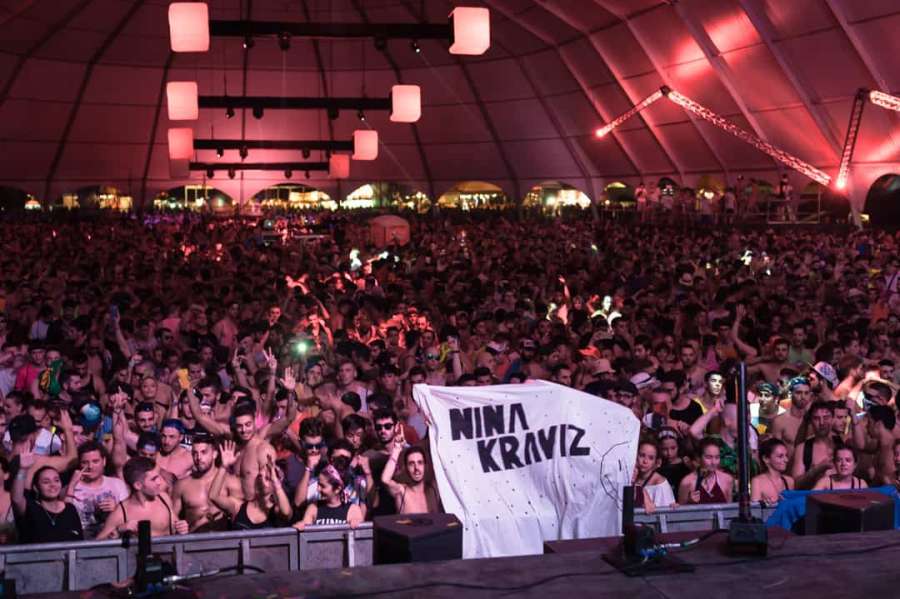So you´ve got your first Press Pass to a music festival. Now what? Festival photography is a whole different beast, especially if you’re used to studio work or other types of photography where you have more control over lighting and environment. Here are some tips for getting the best out of your concert photography, that I learned in the field.
Manners and Norms
For me, the first and foremost is to be aware of what’s expected of you as a photographer and to be respectful of other photographers, the artists, and the people enjoying the festival. Normally, there are two types of photographers; those with press passes who work for other medias and those who are contracted by the festival itself. If you are at the festival with a press pass, it is unlikely that you will be allowed on the stage and will most likely be limited to the space between the stage and the crowd. Either way, it’s important to wear dark colors that won’t draw attention to yourself while you’re working.
Photographers are typically given the first two songs of each performer to get their shots in, and that should be plenty of time. Please, do not be the jerk who sets up camp in the middle of the shooting area with the perfect view of the lead singer, waiting for the ideal moment to get his shot. Instead, plan your angles, move around, duck when you are passing in front of someone, and get in-get out!
I always give a nice smile to the security guys at the gate, ask them how their day is going. A little kindness can go a long way!
Plan Your Route
Festivals are fun, but so much work! Since you only have the first couple of songs by each artist to get your shots, you must have your itinerary planned to the minute! Get there early, study the layout, decide which artists you need to photograph and make yourself a timetable. Remember, you’ll need to use the time in between artists to get photographs of the crowd and the general festival environment!
Camera Settings
Because most festivals tend to start during the day and go into the night, you’ll be working with many different lighting conditions. I like to use 3 or 4 different pre-saved settings on my camera in order to alternate quickly and easily. When shooting artists, my priority is to freeze motion. If it’s dark and I’m only dealing with the stage lights, I crank my ISO to as high as my camera will allow without too much noise (my camera unfortunately peaks at about 1000 but there are cameras that can get much higher) and set my aperture to 4.5 or lower. This allows me to use a faster shutter speed, which is important when your subject is moving all over the stage. If you’re shooting a more mellow artist, who’s maybe seated, you can lower your shutter speed which allows you to use a smaller aperture and lower ISO.
I typically don’t use flash unless I’m in a nightclub, in festivals you can usually get enough light from the stage for a good shot, and the artists appreciate it.
Gear and Lenses
For festivals, I make sure to bring lens cleaner and cloths, because dirt gets into everything. Make sure you’re careful when changing lenses that nothing gets into the sensor, and watch out for the hoses spraying water, sometimes they come as a surprise!
I pack everything up into a comfortable backpack, and try to go as light as possible. I usually bring an 85mm for when I’m in front of the stage, I find that it is the perfect lens to frame each individual artist within the group without getting to up-close. I also bring a 24-120mm zoom, which is great for images of the crowd and the ambience. This is usually enough for me, but each photographer has their gear preference.
Don’t Forget Your Creativity!
Concert photography is fun, but it’s easy to get wrapped up in getting that perfect shot of the lead singer in a typical rockstar pose. Don’t forget to let your artistic expression out to play as well! Think in black and white, think about all of the wild lighting possibilities, think about blurring motion. Experiment, sometimes those are the shots that you love the most!
Tips by Kate Vredevoogd
So, you’ve got your route planned out, you’ve got your gear packed, your settings pre-programmed and your creative mind activated. Now get out there, be respectful of your fellow photographers and artists, and enjoy the music!
Thanks for reading, I hope you enjoyed these tips!
